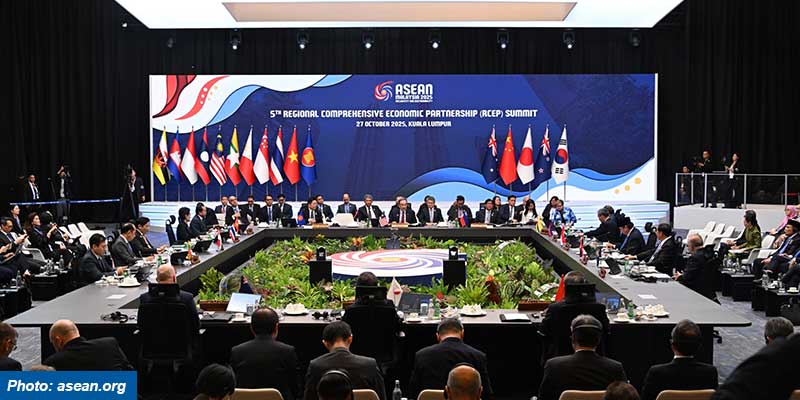- World
- Oct 28
What is RCEP?
• The Regional Comprehensive Economic Partnership (RCEP), comprised of ASEAN states, Australia, Japan, New Zealand and South Korea, held its fifth Summit in Kuala Lumpur, Malaysia on October 27.
• This was the first leaders’ meeting since the RCEP Agreement entered into force in 2022, and the first since the signing ceremony at the 4th RCEP Summit on November 15, 2020.
• During the Summit, the leaders reaffirmed their unity and commitment to upholding an open, inclusive, and rules-based multilateral trading system.
• They also emphasised the importance of enhancing the full and effective implementation of the RCEP amid current global economic and trade uncertainties.
What is the RCEP?
• The RCEP bloc comprises 11 ASEAN group members (Brunei, Cambodia, Indonesia, Malaysia, Myanmar, Singapore, Thailand, the Philippines, Laos, Vietnam and Timor-Leste) and their five FTA partners — China, Japan, South Korea, Australia and New Zealand.
• The RCEP negotiations were launched during the 21st ASEAN Summit in Phnom Penh in November 2012.
• The RCEP economies are home to almost a third of the world’s population.
• The RCEP countries agreed on the terms of the deal in 2019, setting up the path for it to be signed during the summit.
• These member countries cover nearly a third of the global population and about 30 per cent of its global gross domestic product.
• RCEP is considered as the world’s largest free trade agreement by members’ GDP.
• India pulled out of the RCEP in 2019 after entering negotiations in 2013.
• Notably, RCEP marks the first time China, Japan and South Korea have been brought together under a single trade agreement — a process that has been otherwise marred by historical and diplomatic disputes.
• The RCEP will progressively lower tariffs and aims to counter protectionism, boost investment and allow freer movement of goods within the region.
Why did India pull out of the RCEP?
• The Ministry of External Affairs said India withdrew from the RCEP as a number of key concerns flagged by it were not addressed. It said joining it would have resulted in fairly negative consequences for the country’s economy.
• India was part of the RCEP negotiations for nearly seven years. The unresolved issues included inadequate protection against import surge, lack of credible assurances to India on market access, non-tariff barriers and possible circumvention of rules of origin by certain countries.
• The government was concerned that the elimination of tariffs would open its markets to a flood of imports that could harm local producers. Experts warned that India’s large dairy industry would be impacted due to the RCEP as Australian and New Zealand producers could flood Indian markets and kill off mainly unorganised and inefficient small-scale Indian producers.
• Another main reason for India’s reluctance to join the RCEP was China.

